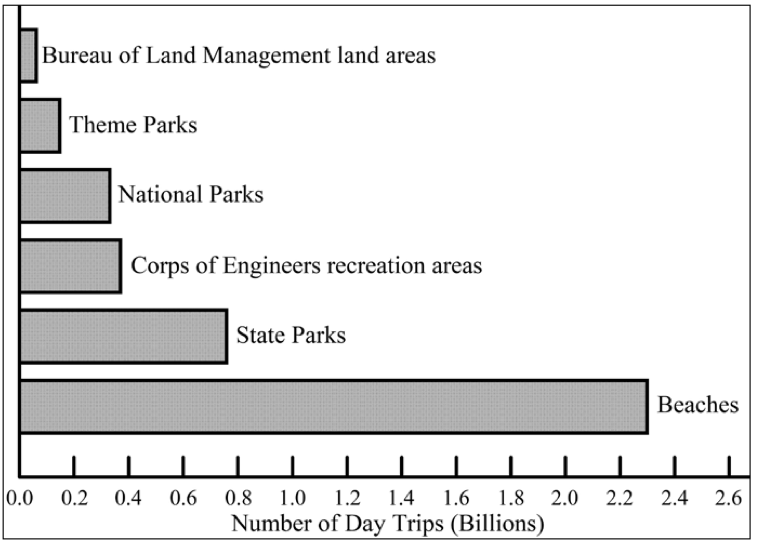ECONOMIC VALUE OF OUR BEACHES
Beach tourism generates $37M/yr for San Clemente
A 2001 survey in San Clemente found (King 2002):
Most summer visitors to San Clemente are relatively local: 23.4% live in the City, another 25.2% live outside the City but within 20 miles, and another 24.5% live within 60 miles. 16.3% live in California more than 60 miles away. 8.9% of visitors are US residents from out of state; 1.8% are foreign visitors.
Close to 60% of respondents stated that they would go out of state if California’s beaches ceased to exist.
The typical visitor spends $77.16 per (person per) day on their beach trip. $54.79 (71%) of this is spent in San Clemente. Please note that the amount spent per day varies widely, as one can see in the box plots below. As a general rule, overnight guests who come from far away and stay in San Clemente spend far more than day-trippers.
The City of San Clemente itself generates $1.65 million in revenues from beach related spending including parking fees, permits and fines, transient occupancy taxes, concessions, and the City’s share of sales taxes from beach spending.
Overnight visitors generate substantially more tax revenue per visitor, $5.72, than do day-trippers: $1.16.
The City’s beaches generate a substantial economic and tax revenue impact for the state and the nation. Including multiplier effects, beach activity in San Clemente generates $116 per person per day in economic activity, or $132 million per year for the State of California.
Including indirect and induced effects, the City’s beaches generate $4.16 per beach visitor in direct State taxes and $10.32 in direct Federal taxes; this result is in stark contrast to the amount generated in parking fees, transient occupancy taxes, and sales tax revenue, which amount to 87 cents per person per day (and 5 cents after City expenses are deducted).
The value of one beach day is estimated at $30.58 per person per day during high season. Overall, we estimate the economic value of San Clemente’s beaches at just over $37 million per year.
Beach tourism returns $230 in federal taxes for every $1 the federal government spends on beach nourishment
Travel and tourism (T&T) is America’s largest employer and earner of foreign exchange, and beaches are its leading tourist destination (Houston 2018). T&T jobs have been growing at a rate 60% greater than overall job growth. America ran a trade deficit of $502 billion in 2016, but T&T produced its largest trade surplus of $84 billion, including a surplus of about $28 billion with China. International tourists alone spend $245 billion annually in the U.S., which is more than the $190 billion value of the entire U.S. agricultural crop. T&T generates over $60 billion in local and state taxes that could pay the wages of every firefighter and police officer or every secondary school teacher in the country. Surveys show that beaches are by far the leading U.S. vacation destination with more day visits than are made to all national and state parks and government lands combined. However, the federal government’s Office of Management and Budget (OMB) gives low budgetary priority to beach tourism and opposes beach nourishment, despite beach tourism supporting 2.5 million jobs, generating $45 billion annually in taxes, and returning $230 in federal taxes for every $1 the federal government spends on beach nourishment. Foreign countries are increasing T&T infrastructure investments, including beach nourishment, at a faster rate than the U.S. and are grabbing an increasing share of the world market (Houston 2018)






